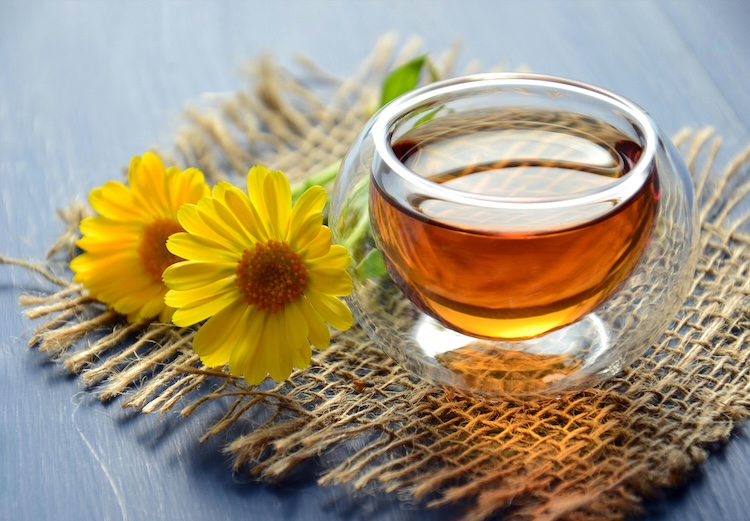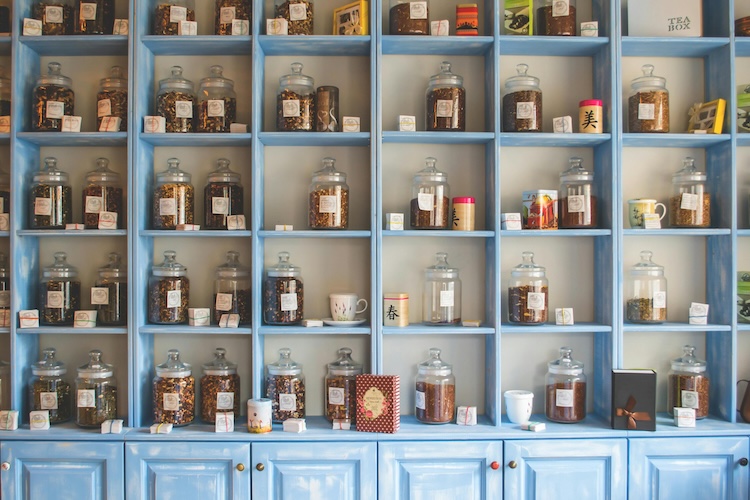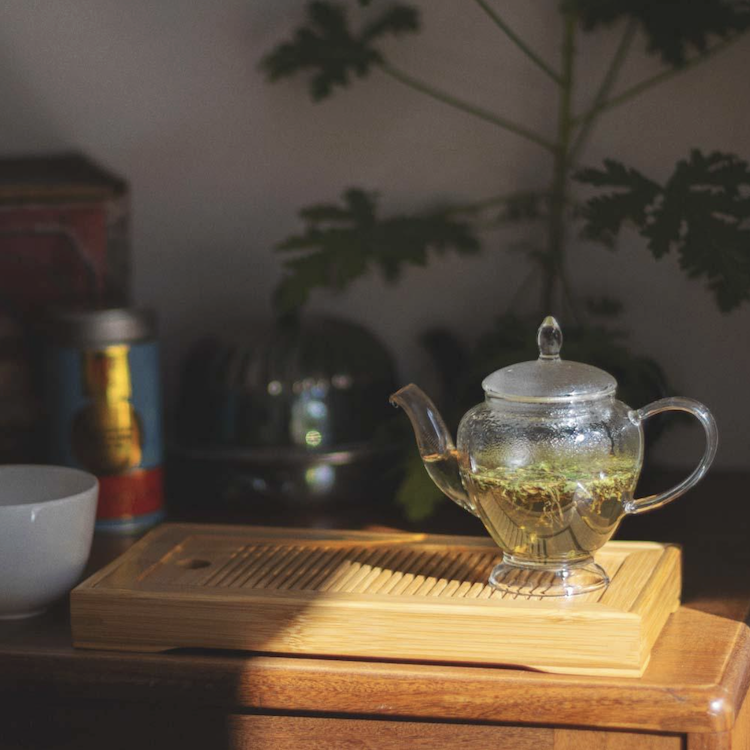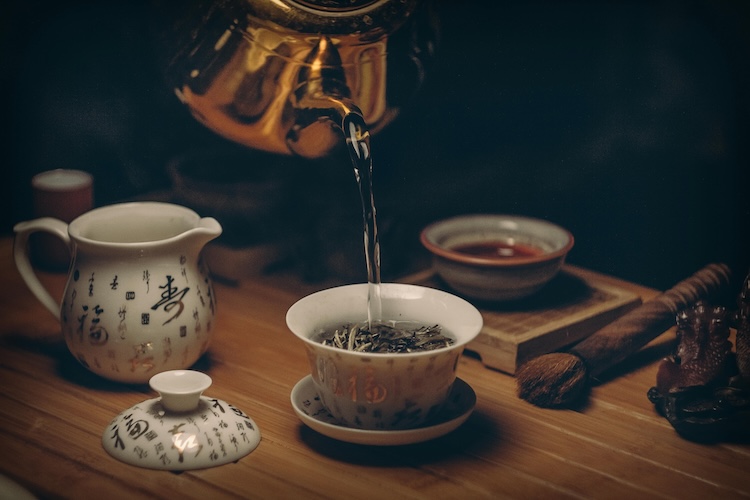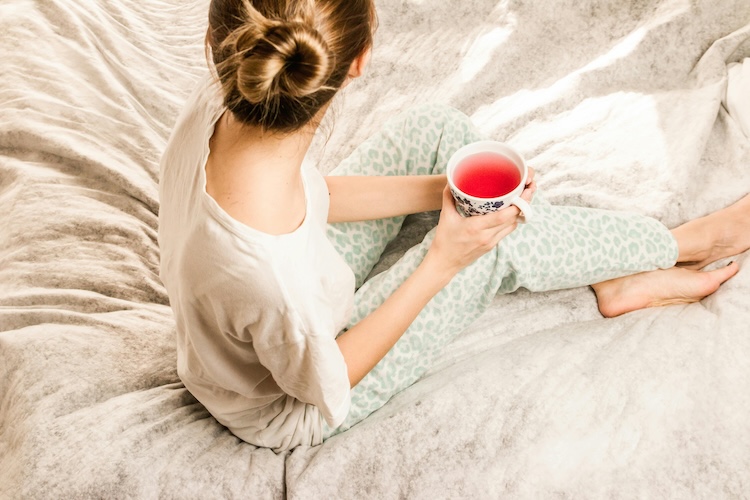Best Gluten Free Teas – Are Teas Naturally Gluten Free?
Discover the safest gluten free teas, expert brewing tips, and trusted brands for celiac-friendly tea rituals. Learn how to avoid cross-contact and enjoy worry-free tea every day.
Tea leaves come from the Camellia sinensis plant, which is naturally gluten free, but there are contamination risks that can introduce gluten. So to be sure your tea is gluten free, look for a brand that has a clear supply chain and regularly tests their batches of tea.
Ever brewed a cup that smelled like serenity itself – only to wonder, mid-sip, “Wait… could this actually hurt me?”
That flash of doubt shatters the ritual faster than a dropped teacup in a quiet library.
Tea, by birthright, should be innocent.
The Camellia sinensis plant, cultivated for millennia from the misty terraces of Darjeeling to the volcanic slopes of Uji, is as naturally gluten free as mountain air.
But purity, like trust, is fragile – it is what happens after the leaf leaves the field that decides your gut’s fate.
- Cross-contact, that silent saboteur, is the most common villain. Industrial facilities are like Heathrow on a Monday morning – chaotic, crowded, and full of questionable mingling. Barley, malted rice, or oat infusions sometimes share equipment, and even microscopic residues (10-20 parts per million) can set off a chain reaction in your system. The math is cruel: one invisible particle, one uncomfortable evening.
- Then comes additive infiltration – those sweet, creamy blends promising “comfort in a cup.” Behind that innocent label could hide barley enzymes or malt extract engineered to mimic warmth. Even instant chai mixes can harbor wheat starch as a thickener. “Natural flavor” might sound poetic, but sometimes it is a Trojan horse.
If this sounds unsettling, it is not paranoia – it is literacy. Knowing which certifications matter makes the invisible visible: HACCP, ISO 22000, and BRCGS are not acronyms for bureaucrats – they are shields for your stomach (source).
Packaging tells its own truth too. 0.5 mm thick tinplate containers with double silicone seals block airborne gluten (those pesky 10-micron particles that slip into everything). QR codes linking to test data? Think of them as your personal Sherlock Holmes report.
Table of Contents
How to Choose the Safest Gluten Free Tea Brands
Let us be honest – shopping for tea should not feel like decoding War and Peace. But for anyone avoiding gluten, the label maze can feel exactly that dense. You deserve more than vague “naturally gluten free” promises typed in italic serenity font.
What you want is traceability – a breadcrumb trail from field to cup, unbroken, verifiable, and ideally more transparent than a Japanese kyusu pot.
The truth? Many teas lose their innocence in the global shuffle. Commodity auctions mix and match leaves the way tabloids shuffle truth and drama.
By the time that “English Breakfast” reaches your shelf, it has passed through enough hands to qualify for a witness protection program. Only brands working through direct trade relationships – think farmer to kettle – can vouch for the leaf’s journey.
Here is where altitude becomes your ally:
- High-altitude gardens, 1,200 to 2,200 meters above sea level, tend to yield cleaner, pest-resistant leaves needing fewer chemical interventions.
- Less chemistry, less chance of gluten-adjacent contamination.
- You see? Physics protects physiology.
And those flavor descriptions?
- Treat them like publisher blurbs.
- “Natural essence” is the vague copy; “bergamot oil from Calabria” is the Oxford University Press edition – peer reviewed, verified, trustworthy.
- Ingredient lists under 30 characters per item suggest real things, not compounds assembled in a lab.
Even packaging tells its own story:
- Bio-plastic pyramid sachets can carry corn starch gluten residues.
- Loose-leaf tins, by contrast, are old-school in the best way: fewer variables, fewer risks.
- Add third-party ELISA testing – with precision down to 0.5 ppm – and you have entered scientific tea territory.
So when you message a company asking for specifics, watch their tone. Do they respond like a sommelier describing terroir or like an intern copying from the FAQ sheet? That difference? It is your health speaking back to you.
Practical insight: Honesty in sourcing speaks louder than certification logos. The brand that opens its books earns your trust, one traceable leaf at a time.
Why Rare Tea Company Is the Best Gluten Free Tea Brand
Here’s why Rare Tea Company could well be the best brand of gluten free tea:
- Pure ingredients: All Rare Tea products are made from 100% loose-leaf tea with no additives, binders, flavorings, or industrial processing, eliminating common gluten contamination risks.
- No teabags or processing aids: By avoiding teabags (which often contain glues, starches, or residues from manufacturing), Rare Tea ensures minimal exposure to hidden gluten sources.
- Direct trade sourcing: Each tea is bought directly from farmers, not through bulk blending or auctions, allowing full traceability to the original tea garden and reducing the risk of cross-contamination.
- Chemical-free farming: Partner farms use organic principles without pesticides or herbicides, preventing contamination from industrial agricultural chemicals or additives.
- Independent testing: Rare Tea conducts its own residue and purity testing rather than relying on certification labels, providing direct quality verification for consumers concerned about allergens like gluten.
- Controlled supply chain: With transparent relationships and small-batch production, the company maintains oversight of every step, ensuring the tea remains naturally gluten-free from field to cup.
- Sustainable packaging: Recyclable tins and plastic-free packaging reduce external contamination and align with clean, natural product standards valued by gluten-free consumers.
Mindful preparation sustains both taste and protection from unwanted residues.
Tea drinkers prevent gluten contamination by dedicating clean tools and following precise brewing steps.
Here is the twist: even the most pristine tea can betray you if your kitchen tools are not faithful. That sleek teapot you used for barley-based tisanes? It might still whisper gluten secrets. Start by dedicating one brewing set exclusively for gluten free use – stainless steel (minimum 0.6 mm thick), porcelain, or glass. Avoid bamboo and unglazed clay; they are as porous as gossip in a small town.
Boil, rinse, repeat. A 20-second rinse with boiling water sterilizes surfaces, while a quick counter wipe ensures stray flour does not crash the party. Think of it as mise en place for peace of mind.
Water makes or breaks the cup. Filtered, slightly soft water keeps flavor molecules expressive rather than dulled by minerals. Control temperature like a lab technician:
- Black tea – 95°C for 3-4 minutes. Theaflavins need heat to bloom.
- Green tea – 80°C for 2 minutes. Cooler preserves antioxidants (source).
- Oolong – 90°C, re-steep twice to chase layered oxidation.
Want consistency? Use a thermometer kettle accurate to ±1°C – it is the Hario of household peace.
Now, sweeteners. That “organic malt syrup” on your shelf? It is barley’s Trojan horse. Choose raw acacia or manuka honey, one teaspoon (5 g, ~16 kcal). They lift body without muting aroma. If you want texture, not sugar, stir once counterclockwise – tea is a suspension of memory, not syrup.
Storage? Think monastic discipline. Tins in a cool (15-20°C), dry (under 50% humidity) cupboard, far from flour bags or spice racks. Keep ambient light below 200 lux to guard those volatile polyphenols that give life to flavor. Six months post-opening, consider it retired – greatness fades fast, like overexposed negatives.
Core message: The small things – clean counters, careful water, correct temperature – are not fussiness; they are craftsmanship. You do not need ceremony; you need consistency.
The Emotional and Physical Benefits of Gluten Free Tea Rituals
Tea rituals transform dietary caution into daily restoration, linking physical comfort with emotional steadiness.
Mindful tea rituals improve calmness and physical well-being by reinforcing safety and control.
There is something profoundly human about watching water darken in a cup. It is the closest thing to alchemy most of us practice daily. For those navigating gluten sensitivity, that transformation means more than flavor – it is proof of control. Every detail – temperature, timing, trusted brand – restores a little autonomy stolen by fear.
When anxiety retreats, the body follows. Within 15 minutes of mindful brewing, cortisol levels can drop 25%. Nutrient absorption improves 12-15% when the parasympathetic nervous system fully engages. You are not just calming nerves; you are rewiring them. As Sen no Rikyū, the father of Japanese tea ceremony, taught: “Tea is nothing more than boiling water and serving it.” The genius lies in the nothing more.
Handling whole leaves is tactile reassurance – the feel of silk, the whisper of certainty. Watching them unfurl in the pot mirrors the mind unclenching. Every pour becomes a conversation between safety and surrender. Over time, the ritual rewires your emotional circuitry: gluten free tea equals calm, not constraint.
Compare it to the pace of teabag culture: hurried dunks, microwaved water, a rush to finish. Ritual breaks that tempo. Five quiet minutes, twice a day, can lower perceived stress by up to 40%, according to behavioral studies. That is not mysticism – that is measurable mindfulness.
Each cup becomes both shield and sanctuary. Tea is not the absence of gluten; it is the presence of peace.
By mastering your tea environment, you reclaim control without obsession. Each pour becomes an act of defiance against anxiety – and a quiet nod to joy.
Building Lasting Confidence Through Gluten Free Tea Knowledge
Consistent learning about tea sourcing and brewing builds long-term trust and resilience.
Every conscious step – from learning contamination patterns to choosing traceable suppliers and brewing with intention – compounds into resilience. In that sense, gluten free tea is less about exclusion and more about restoration. Like great literature or timeless craftsmanship, its value deepens with understanding – sip by deliberate sip.
Gluten Free Tea FAQs
Are all teas naturally gluten free?
No, while tea leaves (from Camellia sinensis) are naturally gluten free, cross-contact and additives during processing can introduce gluten, so only brands with transparent supply chains and testing guarantee safety.
What risks make some teas unsafe for gluten sensitivity?
Teas can be contaminated through shared factory equipment with barley or malt, instant blends with wheat starch, or “natural flavors” concealing gluten-based additives, making careful brand selection essential.
How can I choose the safest gluten free teas?
Select teas from brands offering full traceability, clear ingredient lists, direct trade sourcing, and independent testing. Packaging that blocks airborne gluten and labels with verifiable supply info are also signs of safety.
Why is Rare Tea Company recommended for gluten free tea?
Rare Tea Company avoids additives and teabags, sources directly from farmers, tests independently, and ensures chemical-free, transparent supply chains, minimizing risk of gluten contamination.
Does packaging play a role in keeping tea gluten free?
Yes, secure packaging such as thick tinplate containers with silicone seals helps prevent airborne gluten contamination. Loose-leaf tins are preferred over sachets with corn starch residues.
Can brewing equipment introduce gluten?
Yes, using teapots or strainers previously used for barley, malt, or wheat drinks can contaminate tea. Dedicated, non-porous brewing tools are essential for anyone with gluten concerns.
What brewing practices ensure safety?
Rinsing equipment with boiling water, using filtered water, controlling steeping temperatures, and storing tea away from flour or spices help maintain a gluten free tea experience.
Do gluten free tea rituals have health benefits?
Mindful tea rituals not only support dietary safety but also decrease anxiety, lower cortisol, and improve nutrient absorption. Rituals foster calm and emotional resilience for those managing gluten sensitivity.
How does tea sourcing build confidence in gluten free living?
Learning about contamination risks and choosing trusted suppliers for tea builds long-term confidence, making gluten free tea a restorative, empowering choice for daily wellness.
Photo Credit
Photo by: betül akyürek

